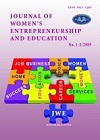The Sustainability of Serbian Civil Society Organizations: Evidences and Remarks
Main Article Content
Abstract
This article try to analyze the question of sustainability of Serbian civil society organizations (CSOs) on the basis of a research carried out by CERFE about juridical and non-juridical obstacles for CSOs. As the study highlights, CSOs: still face difficulties in obtaining real recognition of certain fundamental human and juridical rights; still do not have full self-governance; have several problems in professional identity, as regards knowledge and operative capacities; have an inadequate image and poorly recognised public role; face serious problems of sustainability. These last problems deals with such aspects as whether CSOs have the possibility to conduct certain economic activities, their taxation treatment, their opportunity to access credit, the way to obtain government funding and funds from abroad, tax incentives for individuals and firms wishing to make donations to CSOs, and more besides. On the basis of the research results, at least 5 types of “social regimes” can be identified, concerning: the production of appropriate knowledge about CSOs situations; the capacity building of CSOs; the legislative reform concerning the economic and financial aspects of CSOs life; the public communication about CSOs; the awareness-raising of political society about the CSOs problems and opportunities.
Article Details
Section
Once the manuscript is accepted for publication, authors shall transfer the copyright to the publisher. If the submitted manuscript is not accepted for printing by the journal, the authors shall retain all their rights. The following rights on the manuscript are transferred to the publisher, including any supplementary materials and any parts, extracts or elements of the manuscript:
- the right to reproduce and distribute the manuscript in printed form, including print-on-demand;
- the right to print prepublications, reprints and special editions of the manuscript;
- the right to translate the manuscript into other languages;
- the right to reproduce the manuscript using photomechanical or similar means including, but not limited to photocopy, and the right to distribute these copies;
- the right to reproduce and distribute the manuscript electronically or optically using and all data carriers or storage media, and especially in machine readable/digitalized form on data carriers such as hard drive, CD-ROM, DVD, Blu-ray Disc (BD), Mini Disc, data tapes, and the right to reproduce and distribute the article via these data carriers;
- the right to store the manuscript in databases, including online databases, as well as the right to transmit the manuscript in all technical systems and modes;
- the right to make the manuscript available to the public or to closed user groups on individual demand, for use on monitors or other readers (including e-books), and in printable form for the user, either via the Internet, online service, or via internal or external networks.
Authors reserve the copyright to published articles and have the right to use the article in the same manner like third parties in accordance with the licence Attribution-Non-Commercial-Non-Derivate 4.0 International (CC BY NC ND). Thereby they must quote the basic bibliographic data of the source article published in the journal (authors, article title, journal title, volume, pagination).
